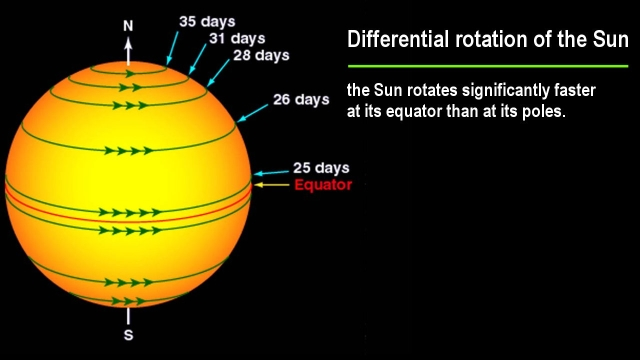Near-Surface Shear Layer of the Sun | 30 Jul 2021
Why in News
Recently, Indian astronomers from Aryabhatta Research Institute of Observational Sciences (ARIES), and Indian Institute of Science, Bangalore, have for the first time given the theoretical explanation of the existence of a near-surface shear layer (NSSL) in the Sun.
- ARIES is an autonomous institute under the Department of Science and Technology.
Key Points
- About Near-Surface Shear Layer (NSSL):
- Apart from differentiation rotation between equator and poles, the helioseismology has revealed that the Sun has a Near-Surface Shear Layer (NSSL).
- The NSSL is the region very close to the visible solar surface, where there is a change in the rotation profile of the Sun.
- This layer exists very close to the solar surface, within which the angular velocity decreases rapidly with radius.
- This NSSL is thought to play a significant role in defining the nature of large-scale convective patterns that drive the Sun's magnetism.
Note
- Angular velocity: It is the time rate at which an object rotates, or revolves, about an axis, or at which the angular displacement between two bodies changes.
- Helioseismology: It is a technique of using sound waves to peek inside the Sun.
- Findings of the Study:
- In their study, they have used an equation called the thermal wind balance equation.
- It explains how the slight difference in temperature between solar poles and equator, called thermal wind, is balanced by the centrifugal force appearing due to solar differential rotation.
- Understanding NSSL is crucial for the study of several solar phenomena like sunspot formation, solar cycle, and it will also help in understanding such phenomena in other stars.
- In their study, they have used an equation called the thermal wind balance equation.
- About Differential Rotation of the Sun:
- It was long known that the Sun has Differential rotation, which means different parts of the Sun rotate at different speeds.
- The Sun rotates faster at the equator than at the poles.
- Over time, the Sun's differential rotation rates cause its magnetic field to become twisted and tangled.
- The "tangles" in the magnetic field lines can produce very, very strong localized magnetic fields.
- These localised magnetic fields on the surface of the Sun are active regions where sunspots occur.
- Sunspots are areas that appear dark on the surface of the Sun (photosphere). They appear dark because they are cooler than other parts of the Sun’s surface.
- Further, these active regions often generate solar storms: solar flares and coronal mass ejections (CMEs).
- It was long known that the Sun has Differential rotation, which means different parts of the Sun rotate at different speeds.

